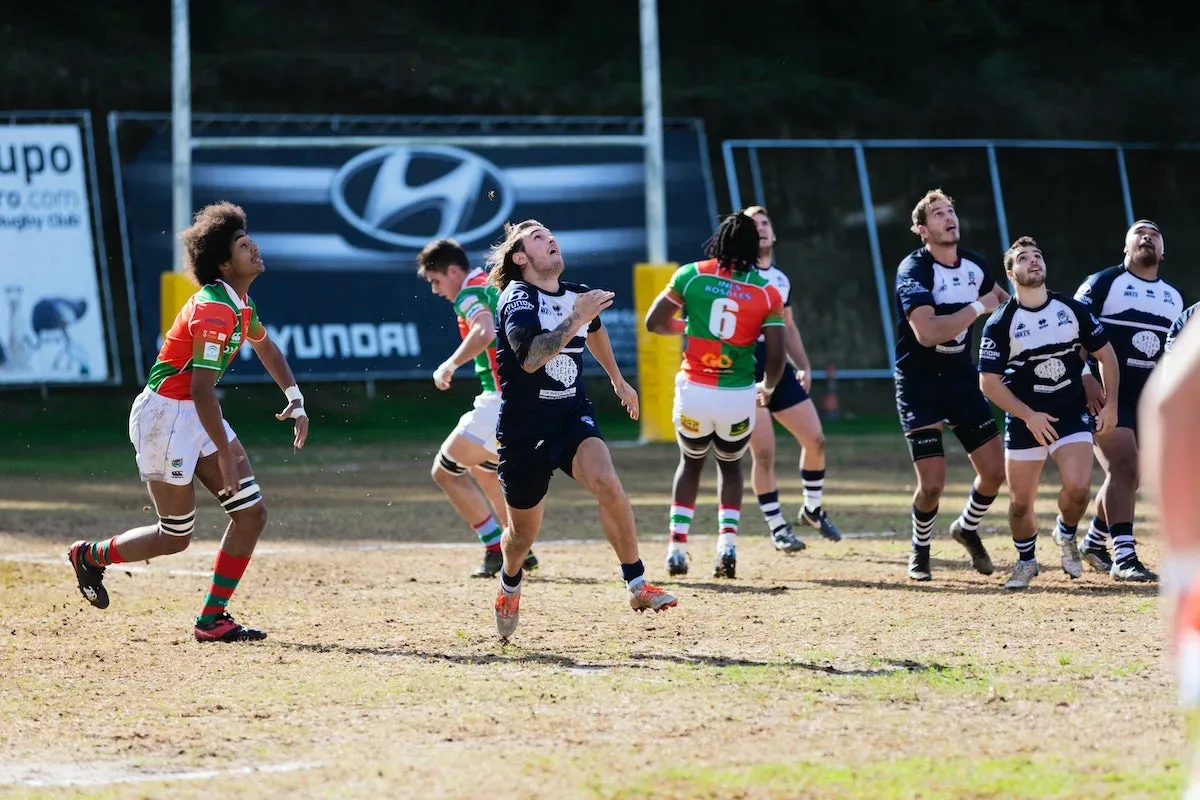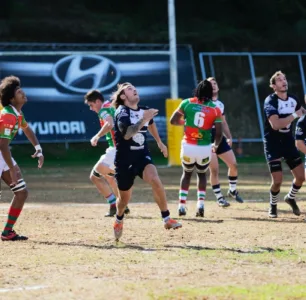Rugby is a complex and dynamic sport that requires a combination of physicality, skill, and strategic thinking to succeed. One crucial aspect of the game is the kick chase, which can have a significant impact on the outcome of a match. A kick chase is the pursuit of a kicked ball by a team that is trying to regain possession or prevent the opposing team from gaining ground. In this article, we will explore the art of the kick chase in rugby, including strategies, techniques, and the benefits of mastering this skill.
Why is the Kick Chase Important?
The kick chase is an essential part of rugby because it allows a team to maintain possession or regain it when they have lost it. If a team executes a good kick chase, they can put pressure on the opposing team and force them to make mistakes. Conversely, a poorly executed kick chase can result in the opposing team gaining possession and potentially scoring points.
The kick chase is also important because it can help a team to gain territory. If a team can kick the ball deep into the opposition’s half and execute a successful kick chase, they can force the opposing team to play from a defensive position. This can make it easier for the kicking team to score points or create opportunities for attacking play.
Strategies for the Kick Chase
There are several strategies that a team can use to execute an effective kick chase. One of the most important is to communicate effectively. Before the kick, players should be aware of their roles and responsibilities during the chase. This will help to ensure that everyone is on the same page and knows what to expect.
Another strategy is to have a designated kick chaser. This player should have good speed, endurance, and tackling ability. They should also be able to read the flight of the ball and anticipate where it will land. This will allow them to get into the best position to contest for the ball and make a tackle if necessary.
It’s also important to vary the type of kick depending on the situation. A high kick can be useful if a team wants to put pressure on the opposing team’s catcher and force a mistake. A low kick can be effective if a team wants to keep the ball in play and prevent the opposing team from gaining territory.
Techniques for the Kick Chase
Executing an effective kick chase requires good technique. One of the most important techniques is to maintain a good body position during the chase. Players should stay low to the ground, with their head up and their eyes on the ball. This will allow them to react quickly to changes in the flight of the ball and adjust their position accordingly.
Another important technique is to sprint hard during the chase. Players should aim to reach their top speed as quickly as possible and maintain it for as long as possible. This will allow them to cover ground quickly and contest for the ball effectively.
It’s also important to be aggressive during the chase. Players should not be afraid to put their bodies on the line and make a physical challenge for the ball. However, they should also be disciplined and avoid dangerous play, such as leading with the shoulder or tackling a player in the air.
Benefits of Mastering the Kick Chase
Mastering the kick chase can provide several benefits for a rugby team. It can help to maintain possession or regain it when it has been lost. It can also help to gain territory and put the opposing team under pressure. A successful kick chase can also demoralise the opposing team and give the kicking team a psychological advantage.
Mastering the kick chase can also help to improve a player’s individual skills. It requires a combination of physicality, speed, agility, and tactical awareness, all of which are important skills for rugby players to develop.
Executing a successful kick chase can also improve a player’s tackling technique. A player who is able to contest for the ball in the air and make a tackle on the opposing team’s catcher will need to have good timing, body position, and tackling technique. This can help to improve their overall defensive skills and make them a more valuable player on the field.
Additionally, the kick chase can help players to develop their decision-making skills. In order to execute an effective kick chase, players need to be able to read the game, anticipate the opposition’s moves, and make split-second decisions about when to chase and how to position themselves. This can help players to develop their overall game intelligence and decision-making abilities, which can be valuable in all areas of rugby.
How to use the kick chase to manipulate the defence
The kick chase is not only a defensive tool but also a powerful attacking weapon that can be used to manipulate the defence. By executing an effective kick chase, teams can create scoring opportunities and force the opposition to make mistakes. Here are some ways to use the kick chase to manipulate the defence:
- Kicking for Space: One effective way to use the kick chase to manipulate the defence is to kick the ball into open space. This can be done by kicking the ball over the defensive line or into the corners of the field. The kick chasers can then sprint after the ball and put pressure on the opposition’s fullback or winger. This can force the defence to scramble and make mistakes, creating gaps and opportunities for the attacking team to exploit.
- Kicking for Height: Another way to use the kick chase to manipulate the defence is to kick the ball high into the air. This can be done by using a box-kick or a spiral-kick, depending on the situation. The kick chasers can then contest for the ball in the air, putting pressure on the opposition’s catcher. This can create turnovers and opportunities for the attacking team to counter-attack.
- Kicking for the Cross-Field: A cross-field kick is another way to use the kick chase to manipulate the defence. This involves kicking the ball across the field, towards the opposite wing or corner. The kick chasers can then sprint after the ball and put pressure on the opposition’s winger. This can force the defence to shift and create gaps and opportunities for the attacking team to exploit.
- Kicking for the Tackle: A kick chase can also be used to force turnovers and create scoring opportunities by aiming for the opposition’s ball-carrier. This can be done by kicking the ball low and hard, aiming for the legs of the ball-carrier. The kick chasers can then sprint after the ball and make a tackle on the opposition’s ball-carrier. This can create turnovers and opportunities for the attacking team to counter-attack.
In conclusion, the kick chase is a powerful tool that can be used to manipulate the defence and create scoring opportunities. By varying the type of kick and the target area, teams can force the defence to make mistakes and create gaps and opportunities for the attacking team to exploit. With effective communication, good technique, and tactical awareness, the kick chase can be a game-changing weapon in rugby.
How the wind will affect your decision making
Wind is a significant factor that can impact decision making when executing a kick chase in rugby. The direction and strength of the wind can affect the flight of the ball, making it more difficult to catch and control. Therefore, it’s essential to consider the wind conditions when making decisions about executing a kick chase. Here are some ways the wind can affect decision making:
The Type of Kick
The wind can affect the type of kick that is used during a kick chase. A strong headwind can make it more difficult to kick the ball deep into the opposition’s half, while a strong tailwind can make it easier to kick the ball further. Therefore, teams may need to adjust the type of kick they use, depending on the wind conditions.
The Target Area
The wind can also affect the target area of the kick. A strong headwind can make it more difficult to kick the ball high into the air, as the wind may push the ball back towards the kicker. Therefore, teams may need to adjust the target area of the kick, aiming for a lower trajectory or kicking for space instead.
The Timing of the Chase
The wind can also affect the timing of the kick chase. If the wind is particularly strong, the kick chasers may need to delay their chase, allowing the ball to be carried further by the wind before they start their pursuit. Alternatively, if the wind is behind the kick chasers, they may need to adjust their timing to avoid overrunning the ball.
The Positioning of the Kick Chasers
The wind can also affect the positioning of the kick chasers during the chase. If the wind is particularly strong, the kick chasers may need to adjust their positioning, moving further back to allow for the wind to carry the ball further. Alternatively, if the wind is behind the kick chasers, they may need to move forward to ensure they reach the ball before it bounces.
In conclusion, the wind is a significant factor that can impact decision making when executing a kick chase in rugby. Teams need to consider the direction and strength of the wind when deciding on the type of kick, target area, timing of the chase, and positioning of the kick chasers. By taking the wind conditions into account, teams can maximise their chances of executing an effective kick chase and regaining possession of the ball.
Conclusion
The kick chase is a crucial aspect of rugby that requires a combination of physicality, skill, and strategic thinking. To execute an effective kick chase, teams need to communicate effectively, vary the type of kick, and maintain good technique during the chase. Mastering the kick chase can help to improve a player’s individual skills, including tackling technique and decision-making abilities, and can provide several benefits for a rugby team, including maintaining possession, gaining territory, and demoralising the opposing team. By focusing on this skill and practising it regularly, rugby players can become more well-rounded and effective on the field.

